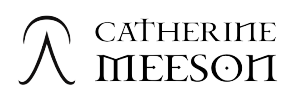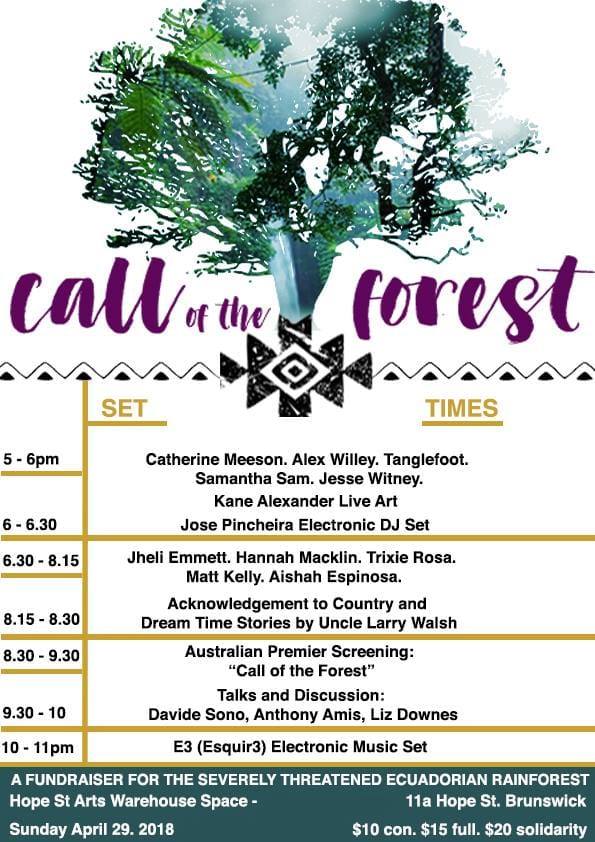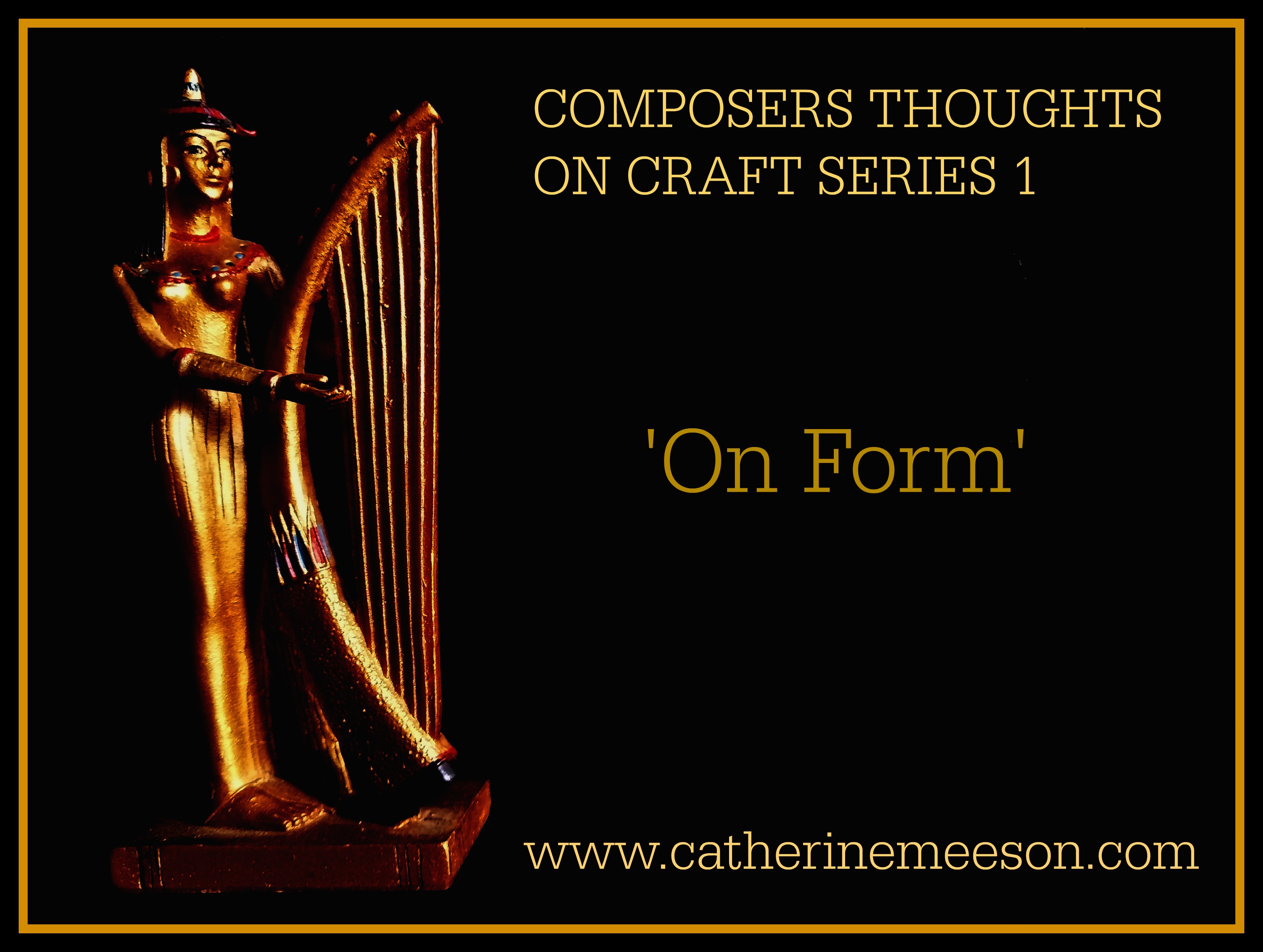Before we venture into the latest in the ‘Composers Thoughts on Craft Series – On Form’, I’d like to share the set times for an important fundraiser I am playing at this Sunday in Brunswick. I do hope you can join us to raise funds to help protect the Equadorian cloud forest and see the premiere of the documentary ‘Call of the forest’
COMPOSERS THOUGHTS ON CRAFT ON FORM
by Catherine Meeson© 2018
Welcome to the fourth in the Composers Thoughts on Craft Series – On Form. We began the series with On Melody then we looked at On Harmony the last in the series was On Rhythm and now we look at form. Please follow the links below to read those articles and for those in my exclusive email subscriber list follow the U-tube links to the private videos embedded within the email.
https://www.catherinemeeson.com/blog-2/composers-thoughts-on-craft-on-melody/
https://www.catherinemeeson.com/catherine-meeson-music/composers-thoughts-on-craft-on-harmony/
https://www.catherinemeeson.com/catherine-meeson-music/composers-thoughts-on-craft-on-rhythm/
Form in music relates to structure – much as it does the shape of things in the material world. Form depends upon focus, musical style or genre and expression and borrows heavily from established conventions. With form we divide musical content into sections which may or may not repeat and they contain specific instrumental, melodic, harmonic, percussive or lyrical elements.
We can apply form to specific individual works or to larger works made up of sections and parts. There is no reason why we cannot regard separate compositions with a focused intent that relate to each other as part of a larger form or compositional schema – i.e. an album or a symphony, as all is part of the greater whole. In some ways in popular music, it is easier to discern elements of form because repetition is more apparent and musical structures are simpler for the lay folk to comprehend. Styles such as jazz and classical involve a much higher level of skill proficiency to play and a much deeper level of theory to compose effectively. Common form elements include
Introductions or A section
Verses or a B section
Bridges which could be the same as a verse structure or it could be like pre-chorus with its own harmonic and melodic content so let’s call it C-section
Chorus let’s call that D section and
We have a repetition of a verse
a Middle 8 or 16 which could be the same as the bridge or a variation of a bridge, with solo’s
chorus repeats either once or twice
and an outro.
Introductions or intro’s and outro’s can be the same or different. Verses tend to have the same guiding harmonic content with maybe slight variations in chord voicings or supporting melodic instruments or lyrical melody. Choruses are mostly uniformly the same.
Great composers like John Williams tend to use form to great effect similar to the way pop or rock musicians do, but the musical motifs become the keynotes that help us to determine the form, and the repetition variation elements. We have in introductory sections the main body of a composition, chorus like sections that repeat and bridging sections. Take the theme for Superman or Indiana Jones movies, I do not have scores to analyse, (I just listen to the patterns) yet within these you can hear all the above intentions with repetition and variation, certain motifs played on specific instruments and turn around sections that brings us back to a previous part of the form. And within that, solo instrumentalists that carry forward the harmonic motion and the dynamics interplay giving the energy to the piece.
Form is more readily apparent when writing on guitar, as it is the primary instrument, there is no other harmonic accompaniment. So the rhythm and the chord structure is essentially the bedrock of the piece whether strummed or plucked etcetera; it is what we build the song upon. When my songs are written on guitar it is a lot easier to discern form, with the repetitions and formal song writing structure. I let each work determine what it will become and hold the structure form quite loosely. It is more the feel thing and the emotional process, a very right brain activity led by the depths, the dynamics of feeling in the moment and finding the chords to express whatever it is that is wanting to emerge. Often, it’s just completely spontaneous and I don’t know what I’m playing half the time have to look on a reverse chord finder to give names to things. This is not to say that I dismiss conventions or fail to use logic and rules and don’t know the names of any chords, but that we absorb it all as we grow up, our ears become entrained in a cultural matrix. I am a child of the 70s and 80s radio world so that has been informing me all my life.
For me I like to keep the maths even. I intend to write in 8, 16, 24 or 32 bar segments or even longer depending on the song and the instrumentation that I’m working with at the time. If I kept strictly to pop type structure it would be more in 8 bar sections for example. It depends what the soul wants to communicate. I like the prog rock era and experimental side of music that emerged in the late 60s and 70s with bands like Pink Floyd, who’s musical output and signature sound evolved over time (in both the Barrett and post Barrett Gilmour era). I guess the 60,70s and 80s is where my love of concept albums came from with people like Jean Michel Jarre, tangerine dream and Rick Wakeman, and obscure records that I find in second-hand shops. Unfortunately, when I met my son’s father my music collecting stopped and I was listening to a lot of work that was not my forte, though I learnt a lot from it and it is how my knowledge of the effect of music and sound really began on a deeper level, it was because of being exposed to the things I hated (death metal and techno).
Writing electronically via midi and software with some guitar and bass is different. The works usually grow from improvisations or trying to catch a melody from my head or something that I sing or just playing. I just literally play around, at this point it is all noodle or play let it emerge into form and be set to a structure. So in order for form to take place, there has to be an emergence process. That’s the human element, I’m sure machines could compose works based on programming and predetermined sequences or completely randomly, but they would just be your machine and no human. Music is one of the highest expressions of humanity.
Once I identify the patterns of melodic, rhythmic and harmonic content, I can bring repetition and variation in and start layering the instruments one after the other. Sometimes this process is just in small four bar segments or a whole section of say 24, 32 bars or even up 64 once. I will noodle and say ‘yes I like that’ and record it and if I make a mistake I do it again, or I edit with the midi roll editor. Yes quantize is on during recording, but I’m not a Nazi with it. Form I find is a good place to weave other structural elements such as arpeggio and ostinato but I don’t always call them that. I say ‘this sounds nice, this is right, yet this feels good, captures the mood, no don’t like it, keep mucking around’ until I come up with something I like (but that’s not very often I don’t like it). I think it’s important to use all the elements in your soup because if you don’t honour what you have been given, then your future harvest will fail, so in that respect the creative process and improvisation or early formative elements are essential to what a work becomes and if you don’t honour them, they won’t come. Our job is to capture the sound.
One of my teachers in uni was roughly the same age as me, he would say that you have to know all of what you are doing and be very deliberate and very conscious about it. Inwardly I said bull shit. One of my workmates is able to sit and analyse what I do on the spot and tell me what it is what inversions what keys, what modes et cetera, et cetera, et cetera, because most of the time I truly do not know. I even struggle to identify the key sometimes, but I just follow my ears. He can say this scale/ mode/ key et cetera. I know the sound- I follow that, I’m a student of the sound current / scholar of the magic of sound. It is not always conscious, in fact it is just like the whispering wind, it comes, it blows, it passes by leaving an impression. If we don’t capture the impression we don’t register the meaning. So sit, play, like what you’re doing or change it, this = form. When finished we have music- song. It is as simple as that
PROCESS
noodle – play
record – in software or on paper
further refine and structure and layer recordings
refine production elements with studio craft
bounce for play
Master and distribute it
so there is form in the song and form in the process they relate yet they are separate..
The Composers Thoughts on Craft exclusive video for email subscribers rendering above Subscribe here https://www.catherinemeeson.com/ship-mates/
The Call of Oma aims to unify feel – play, right brain activity with logic and deliberate intention and left brain form. The ending song ‘Foundation and Summons’ will return to some of the motifs from the beginning track The Call of Oma ( note intention- time will tell it aint written yet). Foundation and summons in itself will not be an ending, but a beginning, an invitation; it may not continue beyond this musically but as I have written the music and during the performance art process last year (which preceded the album) I realised it would make a fantastic feature film. So maybe at the end of this process I may refine it again and it could be offered up for such, the story certainly is provocative enough in the vein of The Day After Tomorrow or 10,000 BC but would need significant adaptation and other elements woven into the story like the culture and civilisation that Oma speaks of. It was inspired by the research of scholar extraordinaire Graham Hancock’s Fingerprints of the Gods, his most recent publication. His main theory is that yes a vast prehistorical civilisation did exist and ended, as a series of major geological cataclysms unfolded over time, of which we are now starting to find confirmation in the geological record and where new archaeological sites such as Goekli tepi in Turkey are unearthed, which pose more questions then we have answers for at this time.
So in a way, a strange way, we return to a form from before, the days that were, that became myth in the minds of men, who have for a long time slept unaware of their former glory! We visit that which is preserved in the perfect symmetry and engineering of the world’s megaliths and hinted at in ancient ice cores that palaeo climatologists study. Pre history- where only myths remain.
Thank you for joining me for On Form and sharing my thoughts on musical process and The Call of Oma as well as ancient history and philosophy. I do hope you’ll stick around for the album. Please feel free to share my blog and my music with others whom may like it and of course I would love you to check out my catalogue which can be found at
www.bandcamp.com.catherinemeeson
Don’t forget to check out the youtube behind the scenes content (subscribers exclusive access only).
Subscribe here https://www.catherinemeeson.com/ship-mates/
Join me on Facebook https://www.facebook.com/CatherineMeesonMusic/
Join me on Instagram https://www.instagram.com/catherinemeeson/
Much love, until On Instrumentation blessings Catherine







